|
Tips to help you connect your family to nature!
|
|
Butterflies are pretty cool! Anna Krickbaum is fascinated by an owl butterfly whose color resemble the camouflage colors of a great horned owl (Photo Courtesy: Carrie Krickbaum) Animals are fascinating creatures that easily capture the attention of children and adults! Most children learn about animals from storybooks, cartoons, and shows but an up-close encounter is another story! A trip to the zoo, a wildlife sanctuary, an animal farm, a horse therapy session, or even a butterfly exhibit is a chance to give life to their imagination and help them build an emotional connection with animals. How cool is it to see a child’s eyes light up in amusement every time they see the “King of the Jungle” prancing around, or giraffes reaching up to nibble leaves from the high tree branches. Even babies screech in excitement when they look into the eyes of a baby goat or pet the soft velvety muzzle of a curious pony. To watch a butterfly open its wings for the first time after emerging from a chrysalis is nature's gift to our sense of wonder. Wildlife encounters provided by zoos and other animal sanctuaries enable children to learn about animals effectively, promote empathy and compassion for living creatures, and foster cognitive development, which helps a child think about and understand the world around them. Observing and discussing animals with young ones stimulates their interest, curiosity and their realization that animals have feelings and emotions too! These encounters are planting the seeds of conservation as they begin to show concern for our natural resources. A natural resource is something that exists in nature, such as soil, water, air, plants, animals, and energy. What a surprise when your child realizes their special animal does exist for real! Most kids can't stop talking about the first real bear they see, which until then existed only as their stuffed teddy bear. A zoo or aquarium can be the scene of such exciting discoveries when wild creatures from around the world are brought together in one place. You don’t have to travel far and wide to see them and they are right there within reachable distance. It is like having their make-believe world come true. Observing behaviors and learning about animals helps children develop a sensitivity to animals as living beings. Children can learn that animals have moods, emotions and needs just like they do. Empathizing with animals gives your child a sensitive mindset for other fellow creatures. Even taking your child to a humane society shelter to play with cats can teach kids’ compassion towards animals. Animal connection can help your child grow up to be more aware and responsible towards nature, the environment and its conservation. Learning to respect animals is an important lesson. Even in a zoo, aquarium, ranch, pond, wildlife park or national park, these places provide habitats and homes for animals. It is important to respect an animal's space and not disturb them. Children need to learn early to comply with rules for watching animals for their safety as well as the animal's safety. It is intriguing to watch lions roaring and monkeys scratching their heads, otters swimming or a beautiful peacock displaying its tail feathers! Visits to the zoo may help children understand animal behavior and characteristics. Even though some animals are confined in cages, their setting provides a semblance of their natural habitat. Observing animals being their natural selves in their almost natural environment is an immense learning experience for children. Who doesn’t remember relating to a sleeping lion or a penguin joyfully diving into the water? While observing animals, focus on your child's senses- visual, auditory, and kinesthetic! Children's learning experiences are enhanced when they employ their senses. If they can see, hear and touch animals, they will remember more than just hearing about them. Auditory learners find it fascinating to listen to animal sounds while visual learners enjoy watching animal antics. For some people, it is difficult to see animals in settings like zoos. However, many zoos are doing great conservation research with other countries to protect or re-establish species. Wildlife sanctuaries are an important refuge for wild animals that can no longer survive in the wild. There are many places in Colorado where you can take your children to safely experience animals up close and personal. Summer is a great time to go on a family field trip to observe and learn about animals: hear a chorus of native frogs at the Denver Zoo, touch the smooth, shimmering back of a stingray at the Denver Aquarium or experience the magic of metamorphosis at the Butterfly Pavilion. Check out some of our suggestions for summer animal learning adventures below. ********** Wild Animal Sanctuary (https://www.wildanimalsanctuary.org/) is an educational facility (located near Keenesburg, - eastern Colorado) built on 1,300 acres of beautiful open grassland, the kind typically found on the plains of Colorado. The wild animal sanctuary is the largest carnivore sanctuary in the work not only by the number of animals rescued and currently cared for, but also through the size and scope of operations. This site currently hosts over 550 lions, tigers, bears, wolves and other rescued animals and is open to the public for educational purposes The Wild Mustang Sanctuary Herd (https://www.greatescapemustangs.org/sanctuary) is composed of mustangs who have journeyed through various chapters – from the wild to captivity but are strongly wired with their wild instincts and have proven themselves happier with minimal human interactions. Here, they are granted the freedom to live out their life grazing and roaming, forming bonds within a natural environment that mirrors their native habitats. The Denver Zoo (https://denverzoo.org/) programs are rooted in age-appropriate experiences that connect all learners to the natural world through cultivation of empathy and self-driven exploration that builds knowledge and ultimately empowers learners to take action for wildlife. Butterfly Pavilion in Westminster, CO (https://butterflies.org/) is the first stand-alone, Association of Zoos and Aquariums-accredited non-profit invertebrate zoo in the world and a leader in invertebrate knowledge, inspiration and connection. Whether it is providing unique, hands-on learning experiences in our exhibits and educational programs, conducting new research that sets the standard for zoos across the country or building innovative solutions for species and habitat conservation in countries around the world, Butterfly Pavilion is leading the way in ensuring invertebrates are protected for the future. Metaphorse Equine Therapy and Riding Instruction (https://www.metaphorse.com/) offers a uniquely designed equine activity for children and adults. Each session with the therapy horses can truly be a profound experience, is a more powerful way to learn and is proven to cause a lasting change. Western Colorado Botanic Gardens: Butterflies (https://wcbotanic.org/butterflies/ promotes the responsible conservation of precious natural resources in Western, Colorado by providing educational and recreational opportunities for visitors of all ages, while offering an aesthetic setting for cultural and community events.” Moon Farm Petting Zoo (Moon Farm Pumpkin Patch and Petting Zoo - Moon Farm) Grand Valley Equine Assisted Learning (www.gvequineassistedlearningcenter.org) provides horse-based therapies for children, adults, veterans and public servants including police and fire personnel to facilitate growth, learning and healing to people of all abilities including the disabled, disadvantaged and special needs.
0 Comments
Nature guides are a great way to identify critters. These girls are using a bird guide to help them identify local birds likely to be seen along the Gunnison River. Colorado is famous for its great outdoor activities. Many of these activities require money or experience to get involved. Snowboarding, rock climbing, climbing 14ers, or riding snowmobiles or ATVs require both. Getting started in outdoor activities can be easier than you think, though. It is widely known that being outdoors helps our physical and mental health. So, here are a few easy and cheap ways to get outside on your own, or with others. Hiking: One of the best outdoor activities to start with is hiking or trail walking. The only real required equipment to start is a good pair of shoes. This cannot be stressed enough. Poor fitting or flimsy shoes can result in some frustrating experiences like blisters and sore feet. It can also result in safety issues from poor footing in steep or slippery trail areas. This does not mean you have to purchase expensive hiking boots or shoes, but sturdy, well-soled shoes with a good fit will be comfortable and safer. Next, and very importantly is to know where you are going. The COTREX app is a great trail application that has many hiking, biking and other trails all over Colorado. It includes important trail information such as distance, elevation changes, surface etc. Second, start with trails closer to your community because these are typically well signed and shorter. These will help you get a sense of how you feel on a variety of distances in different topography. Bring water and extra clothing layers for changes in temperatures. Before you know it, you will have gained experience, stamina and a little more equipment. You will be ready for longer day hikes on our public lands. Some of the most memorable experiences are being outdoors and seeing, hearing, smelling, or feeling nature around us. A short trail walk in the same location in winter, spring, summer and fall will result in amazing differences in what you experience. Tracks and Scat Hunting: It is surprising how many species of wildlife are close to, and even inside, towns in Colorado. Recently, I was on one of the concrete trails early in the day in Montrose after a slight snow fall. I was excited to see fox tracks, and a beaver track including drag marks where the beaver had pulled a tree across the trail. In addition to small mammals and rodents, there are great bird and waterfowl tracks all around communities. Even more fun than tracks by itself, is to add scat identification. Identifying scat (or poo), and the creature associated with it, is a surprising amount of fun. Different families of animals will have different scat based on what they eat and how it is processed. Herbivore scat looks very different from carnivore or omnivore scat. In addition to tracks and scat, there are other ‘signs’ you can find like trees felled by beaver, or deer antler rubbings on trees, or the mud slide of a river otter. It is a little like a nature investigation. Best of all, there is no real cost to get started because track and scat guides can be pulled up online, obtained at many wildlife or public land offices, or you can also check out scat and track guides at your local library. As with all activities involving wildlife, the goal is to not disrupt the actual animal, so observe from a distance or just look for the sign and know they are around. Star Gazing: Similar to tracks and scat, astronomy guides are available as apps or online. You can also find printed materials at your local library. Make sure you have an app, or guide, that covers your location and the current time of year. The key to star viewing is clear night skies with as little ambient light as possible to not wash out the constellations (so get away from streetlights, vehicles, etc). One of the easiest constellations to identify is the Big Dipper. National and state parks have astronomy programs you can also attend where the local astronomy clubs bring out amazing telescopes that bring the planets, comets, or other astronomical features more into focus. These and other programs also add information to make your future star gazing even better. Outdoor Discovery Apps If you have a ‘smart’ phone, you can also use several outdoor applications in outdoor discovery. Applications like Agents of Discovery, INaturalist, Merlin, geocaching and others are very user friendly, and allow you to choose what you want to focus on. Some have missions or challenges, others are to help id any type of natural item out there (plants, animals, rocks, birds, you name it!). Even though we all need less screen time, this is a way to be outdoors and focus on what is around us with the assistance of technology. In addition to the above recommendations, other cheap and easy outdoor activities can be as simple as flying a kite, or making our own ‘Outdoor Bingo/Scavenger Hunt’ where you can look for things like a rock the size of a toaster, any bug under a rock, or any bird with white and black feathers. Another recommendation is to find a mentor who is already doing things you are interested in, and ask them to show you how to get started. When I first moved to Montrose, a co-worker showed me all his favorite trails, and areas to hike or bike. Many of those trails mean a lot to me. I have since taken my kids and hopefully soon my grandkids out to the same areas. You don’t need to be an expert or wealthy to spend time outdoors, there are many ways to get started and the benefits are endless! Local youth learn about owl adaptations for flying at night from a Forest Service Wildlife Biologist. By now we have all heard how vital it is for the health and well-being of our youth to be active in the outdoors. Not only that, but nature immersion helps our youth develop resiliency and confidence - what kid doesn’t need more of that these days? Unfortunately, many families living in rural Colorado have incomes where they can’t afford the outdoor activities so popular in our local area. The good news is that kids - specifically those living in Montrose and Delta Counties - are lucky, as new opportunities to help them experience outdoor activities are continuing to emerge. Efforts to expand access to the outdoors have been growing over the past few years in Colorado, and outdoor equity groups have been finding new sources of funding. Inclusiveness and equity are two of the main components of the Colorado Outdoor Equity Grant Program (COEGP) created in 2021 when Governor Polis signed House Bill 21-1318, funding over $2 million of awards each year to organizations dedicated to getting underserved and underrepresented youth connected to outdoor activities. Colorado Parks and Wildlife sponsor the COEGP, managed by a board who has developed guidelines allowing each community flexibility in identifying their community values, priorities, and resources needed to achieve their goals for “leveling the playing field.” Whatever each community develops as their strategy, one of the focus areas of the COEGP is creating opportunities that instill a sense of wonder, excitement, and responsibility for the environment in Colorado youth and families. The COEGP aims to increase the inclusivity of underserved youth and families in the outdoors. What does “underserved” mean? As defined by the COEGP board, underserved youth participants are “youth and their families who face racial and environmental inequities, are low-income, are from the LGBTQ+ community, are disabled, or are members of a Federally recognized Tribe.” Friends of Youth and Nature (FOYAN) has been awarded funding in 2023 from this Program to provide the needed assistance for connecting our youth to the outdoors through our partnership with youth groups comprising the Together for Resilient Youth coalition (TRY). Our award of $67,180 has enabled us to reduce the barriers for our TRY youth coalition members to get outdoors. This hard-working group of youth services providers in Delta and Montrose Counties has come together for three years now to offer outdoor experiences to our youth most in need. These youth are receiving vital services through participating organizations including Black Canyon Boys and Girls Club, CASA7JD, Families Plus, Haven House for the Homeless, Partners West, Outer Range, and Montrose Recreation District. The Colorado Outdoor Equity Grand award has given FOYAN the opportunity to offer five outdoor events from 2023-24. This has allowed us to build up a mountain bike fleet managed by Montrose Recreation District that is available to these groups free of charge at events or for group checkouts. This bike fleet will be available long after the end of this grant award. In addition, personnel of these organizations receive a stipend to recruit, organize, and transport youth to the event venues. FOYAN also provides food for all participants, and has helped establish an additional free gear library managed by Partners West of Montrose and Ridgway State Park. Since our grant award in March of 2023, FOYAN has offered several events for these youth and their families. In April of 2023 Ridgway State Park hosted over 120 participants who learned archery, fishing, fish printing, and birding skills. In June, the TRY youth participated in one of two raft trips on the Gunnison River, and our inaugural bike rodeo at Cerise Park in Montrose. We also had another trip to Ridgway State Park where youth and their families learned to paddleboard, bike, swim, and fish. In October, we shared the Outer Range Campus in Montrose to learn about outdoor careers from representatives of the United States Forest Service, Colorado Parks and Wildlife, Bureau of Land Management, Colorado Canyons Association, and Montrose Recreation District. In 2024 we will again offer most of these amazing outings, as well as have a fun day in the snow on Grand Mesa learning to cross-country ski, snowshoe, sled, build snow sculptures – and hopefully ice fish! We are grateful to the Colorado Outdoor Equity Board for the support needed for helping us to break down the barriers to outdoor recreation for our Western Slope youth participants. Be sure to learn more about this invaluable program at: https://cpw.state.co.us/aboutus/Pages/Outdoor-Equity-Fund.aspx. This healthy bear has been in a feeding frenzy called hyperphacia, storing up fat to get through the long winter ahead (photo credit: Shuttertock.com\Brett Welcher) Fall is a beautiful time of year to get outside—trees are starting to change colors and there is a pleasant bite in the air, a welcome change from the warm summer temperatures. With fall comes preparation for winter such as cleaning up the yard and garden, and stockpiling wood for the fireplace or wood stove. Animals are also preparing for winter, and educating the public about being ‘Bear Aware’ is a focus this time of year for the United States Forest Service, Colorado Parks and Wildlife, the U.S. Fish and Wildlife Service, and the National Park Service. Fall is an especially important time to be cautious around bears as they are entering a biologically driven phase called hyperphagia. Hyperphagia is the name given to the drive in bears that increases their feeding activity. This builds up the fat reserves necessary to get them through five to seven months of hibernation. Black bears, the only bear species in Colorado, eat as much as 20,000 calories a day during this time, sometimes foraging for 20 hours a day! Eating and drinking non-stop, bears rely on fruits, berries, acorns, and insects to satiate their appetite during this hyperphagia phase. They are opportunistic feeders and will also raid garbage cans, local honey producers, and orchards in more populated areas if given the chance. Bear encounters in Colorado can be opportunities to observe them, with caution. What do we need to do to keep ourselves and the bears safe during this time of year? Some things you can do at your home for bear safety are to make sure your garbage is in a bear resistant garbage can or dumpster, and bring bird feeders in at night. If camping, make sure all food and garbage is in a bear canister or airtight container and locked in your trunk, or hung from a tree away from your tent, car, or camper. Always lock your car or camper when you leave your campsite and at night; bears are very smart, and have been known to open door latches! Once a bear associates people with food, they become what is known as a nuisance bear and may have to be relocated, or if they are involved in repeated human-bear encounters they may have to be put down by Colorado Parks and Wildlife officials. If they come into your yard or camp, yell, bang pots, blow a whistle, or honk your car horn to chase them away – and always make sure they have a clear escape route. While hiking in bear country, it is a good idea to wear a bear bell on your pack or talk to your hiking partner while on the trail. These noises will usually let the bear know you are there, and they will move away on their own before you even see them. Be alert, keep your dog on a leash, and pick a camp spot away from signs of bear activity such as bear scat or overturned and shredded logs. An unleashed dog can bring an irritated bear directly back to you, increasing the chance of an unwanted bear encounter. It is a good idea to carry a can of bear spray, and know how to use it. If you see a bear while hiking, experts say the first thing to do is to stay calm, face the bear, stand your ground, and talk to the bear in a calm voice to let them know you are human. Say things like, “Hey bear,” and make sure the bear has an escape route, stepping downhill off the trail if necessary and backing away slowly. Never run or climb a tree! If you see cubs, you should leave the area immediately as the mother will be close by—never approach a bear or bear cubs! If the bear stands up, they are trying to identify you by seeing and smelling you. Wave your arms slowly over your head. If the bear huffs, stomps, or pops its jaw, they want more space. Keep backing away slowly until you can’t see it anymore. If the bear approaches you, it could be food-conditioned, or rarely, an aggressive bear. Stand your ground, keep backing away, and yell or throw small rocks towards the bear. Now is the time you will want to get your bear spray out, but do not use it until the bear is about 40 feet away. If the worst-case scenario occurs and the bear attacks, fight back with everything you’ve got – a pocket knife, hiking poles, or even your bare hands. People have successfully fought off a black bear by convincing them that they are not worth the trouble. Keep in mind that this scenario is extremely rare. If you see a bear in the distance, enjoy the sight and count yourself lucky to have seen such a beautiful animal. Don’t try to get closer—just enjoy this rare moment and move on to enjoy the rest of your day. Know that you are in bear country and be Bear Aware! More information can be found on the internet by searching “Be Bear Aware” or “Bearwise”. Students use a nature guide to help identify the bird in hand. The Black Canyon Audubon Society volunteers host a learning station featuring taxidermy bird specimens to help students learn about bird adaptations to their environment and food sources, and how to identify birds likely observed in their neighborhoods during the North Fork Conservation Days (Paonia). It’s a bit like speed dating for adults only this event involves quick learning interactions for kids. Springtime environmental education events are ways for elementary students to engage with natural resource experts to learn as much as possible in a short period. Each dedicated specialist has 20-25 minutes to engage elementary students about their area of expertise with hands-on activities and tips about their jobs. Students rotate through 8 to 9 stations in a day to learn about many topics, such as how forests contribute to healthy watersheds, how various aquatic insects indicate water quality, what kinds of items can be recycled, and much more. Montrose, Grand Junction, and the North Fork Valley all have festivals organized and sponsored by many organizations, partners, and volunteers who work together to provide this opportunity for the youth of these communities.
Presenters, mostly natural resources experts from various agencies, explain aspects of their field that most kids, and even some adults, never think about. As an added bonus, students get insights into various natural resource careers. “These can be defining moments for young minds that may influence their choices for a lifelong passion or a future career path,” says Anita Evans of Friends of Youth and Nature, one of the funding contributors to the event. For the last 30 years, fourth graders from the Uncompahgre Valley have attended the Montrose event organized by the Shavano Conservation District. The Natural Resource Festival (previously known as the Water Festival) draws approximately 450 -500 students each year. This May students headed to Baldridge Park for a full day of fun learning activities. “Classes rotate through 9 learning stations, out of 29 featured at the festival, and engage in activities that demonstrate the connections between their lives and the resources they depend on. Activities are focused on all of our natural resources, with an emphasis on water connections in their lives,” explains Mendy Stewart, Education Specialist for the Shavano Conservation District, and festival organizer. “The activities are meant to be ‘hands-on’, where kids really get in the mix of things,” Stewart added. A wide array of resource topics and activities are featured such as: demonstrating how river water is treated before being sent to our faucets, making play-dough watersheds and determining where the rivers and lakes form after a simulated rainstorm, making your own recycled paper, panning for silver while learning about Colorado’s Mining history with the Colorado Department of Reclamation and Mine Safety, practicing moving water through irrigation pipes with the Uncompahgre Valley Water Users, measuring the flow of a nearby stream with a Colorado Water Commissioner and putting their math minds to work figuring the rate of flow in cubic feet per second (cfs). Other activities help kids to learn things like “Leave No Trace” and how to minimize impacts when exploring nature. The Colorado State Forestry Department sets up an experiment where students predict the amount and quality of rainwater runoff between two watersheds (actually dirt-filled culverts), one with plants and one with bare soil. After predicting the outcome of a rainstorm, the students learn how plant cover works to slow runoff, so it can be absorbed within the watershed. “This is a huge benefit to water quality, catching soil and pollutants before they reach rivers,” explains Tanya Banulis, Colorado State forester. Dave Dearstyne, retired Natural Resource Conservation Service (NRCS) soil scientist, focuses students’ attention on detecting some of the millions of microorganisms living in our soil. Who would think to look that closely at dirt? This event involves a lot of planning and behind-the scenes work such as pre-festival classroom presentations and festival logistics. The festival's successes are attributed to the dedication of Stewart and the supporting host agency, the Shavano Valley Conservation District. Festival supplies, student transportation, and festival planning are made possible through matching funds to the Shavano Conservation District received from the Colorado State Conservation Board. The goal of this program is to help Conservation Districts in Colorado implement conservation projects and educational activities. In addition to the festival, the funds have also made conservation education available to San Miguel, Ouray, and Montrose County students. The activities also include source pollution presentations, 9th grade Mancos Shale Soil Salinity Experiments, and 5th and 6th grade conservation poster contests. Stewart says these events, “...inspire learning opportunities for Western Slope students who will be part of an outdoor savvy generation. We hope they will be empowered to use what they learn to influence future decisions about land and water uses that benefit our planet now and in the future.” Some kids take time to reflect about what they learned during the festivals; others are super excited and cannot stop talking about the day. Parents or relatives can encourage more discussion or help reinforce significant concepts kids learned. Ask your child what learning station impressed them the most? Here are a few questions that will help you start a discussion with your student: What can you tell me about the Gunnison or Colorado River’s journey to the ocean? What type of water bugs will you find in your favorite fishing spot? How fast is the river near you flowing this spring? What are the components of a beehive? How can you harness solar power? Can you use it to make a fruit smoothie or baked good? What should you put into your community’s recycle bins? What foods are produced locally and where can you find them? Friends of Youth and Nature is a non-profit promoting opportunities for youth and families to get outside, experience outdoor activities, and explore nature. Your donations as well as grants received by FOYAN from the Gunnison Basin Roundtable (DNR- Colorado Water Conservation Board) and Forever Our Rivers (Connecting Rivers and Communities) have enabled FOYAN to contribute funding for these festivals. Shooting for the moon is a phrase that implies something is an unattainable target—but is that true? NASA is shooting for the moon right now with their Artemis 1, the first of the Orion Spacecraft. This unmanned moon launch is the first of many scheduled flights that will orbit the Moon and send several satellites out to collect data for future manned missions taking astronauts to the Moon’s surface. The subsequent Artemis missions will be the first manned flights to the moon since Apollo 17 in 1972, 50 years ago. These series of flights are intended to set up a lunar station for sustainable exploration beyond the Earth’s orbit—the possibilities are endless! Reaching the moon by spaceship is only our most recent relationship with our orbiting orb. The Moon has played an important part in our lives as humans for millennia. For most of our history, the Moon was the only source of illumination at night. It helped travelers navigate, and enabled people to work at night. It has signified wisdom, intuition, birth, death, reincarnation, and fertility, and has long been integrally tied to farming. The first astronomers created calendars from changes they saw in the Moon and linked those changes to the four seasons, crop planting, and harvesting. Many turns of phrase refer to the Moon, such as “once in a blue moon”, “many moons ago”, “promise the moon”, “over the moon”, “baying at the moon”, and let us not forget about honeymoons! We eat Moon Pies and look for the Man in the Moon, listen to songs like “Moon River” and read books to our children such as “Goodnight Moon”. Its magnificent presence in the sky has permeated our lives on every level. So, what do we see when we look up into the sky and see the Moon in its various stages? First, we need to know that the Moon revolves, or travels, around the Earth every 28 days, just like the Earth revolves around the Sun every 365 days. As the Moon revolves around the Earth it also rotates on its axis just one time during that 28 days, which means we always see the same side of the Moon. The Earth, on the other hand, rotates on its axis once a day—or 365 times in one year—as it travels around the sun. Why then do we see the Moon in its different phases or shapes? Sometimes we see a full moon, sometimes only a sliver or crescent moon based on the Sun’s reflection off the lunar surface. The Moon’s phases are created by the position of the Moon relative to the Earth and the Sun. A new Moon occurs when the Moon, Earth, and Sun all lie approximately in the same line with the Moon between the Earth and Sun from the Earth’s perspective. The side of the moon facing the Earth is completely dark because it has no sun reflecting off it. On the other hand, a full Moon occurs when the Moon’s revolution around the Earth puts it on the opposite side of the Earth from the Sun. The Sun’s rays then reflect off the full lunar surface that faces the Earth. The eight basic phases of the Moon can be seen in this graphic: There are four primary phases: new Moon, first quarter, full Moon, and third quarter. The secondary phases are waxing crescent, waxing gibbous, waning gibbous, and waning crescent. Waxing means an apparent growth of the Moon’s image each night, always getting larger from right to left. Waning means the image is shrinking, which also occurs from right to left as you see the Moon’s image in the sky. This graphic shows the position of the Moon and the Sun during each of the Moon’s phases and the Moon as it appears from Earth during each phase. Not to scale. Credit: NASA/JPL-Caltech One of the most interesting concepts behind the Moon’s phases is that the Moon, along with every other object in the sky, is in constant motion. The light we see from the Moon is a reflection of our Sun’s rays based on its position in the sky relative to Earth, not from Earth’s shadow as some believe. Also, its rotation around the Earth affects more than just our language and farming rhythms. The Moon’s diameter is about one fourth the of the size of the Earth’s width, making it Earth’s largest and only natural satellite. Its huge mass results in gravity that tugs at the Earth’s oceans to move in a pattern we call the tides. As the Earth rotates the water bulges out on the side closest to the Moon and the side farthest from the Moon, creating a high tide. As the Earth continues to rotate through its 24 hour cycle most shorelines experience two high and two low tides per day, spaced 12 hours apart.
Being Earth’s closest neighbor in space, it is no wonder the Moon plays such an important part in our everyday lives. Learning the science behind the Moon, its phases, and its effect on our planet is just the first step to learning about what lies beyond its orbit. From Apollo 8 to Artemis 1—to the Moon we go! Many little hands release a Wilson’s warbler after it was banded at Ridgway State Park. Students observe and assist bird banders as part of the Rocky Mountain Bird Banding Project at Ridgway and at the Audubon Nature Center at Connected Lakes in Grand Junction. The banding operation occurs annually in early September. Chick-a-de-de-de-de, chickadee in the tree, I see a chickadee, chickadee in the tree. Making up quick songs while hiking with little kids is a fun way to connect and remember birds. Chickadees are a favorite for kids and adults of all ages because the words we use to describe their song is also their name! Another fun bird call to listen for is the Ruby Crowned Kinglet. It is called the “cheeseburger bird” because the mnemonic for its song is “cheeseburger, cheeseburger, cheeseburger”. Mnemonics (words to help us remember) are fun and easy to learn. Visit Augubon.org to learn some tricks on remembering bird songs. (https://tinyurl.com/remembering-bird-calls) How do you spark that interest in nature with your kids? Summer is a great time to start thinking of ways to get your young ones out there and engaged with the outdoors. It could be as simple as buying a pair of binoculars and a basic bird book, or taking walks in the woods to just look and listen. Get them prepped with anticipation by going to the library and checking out some books about nature. There are many children’s books that can introduce kids to the wonder and beauty of nature. Some even provide a variety of cultural interests. One example is a children's book about the endangered Golden-cheeked Warbler and how it became part of a movement to embrace Indigenous languages in Mexico (tinyurl.com/the-tale-of-one-tiny-songbird). Image courtesy of Audubon Society. (image courtesy of audubon.org)
Audubon is all about getting out there and appreciating nature and birds! Their website has so much information; it is worth a browse to get a few DIY summer camp ideas. Their page - JUST FOR KIDS! (Or kids at heart) “aims to bring together activities from across Audubon’s national network of environmental educators, including the classroom curriculum Audubon Adventures, plus related DIY activities and content from Audubon’s editors.” (tinyurl.com/audubon-afterschool-fun). There are even events for family participation – to help you and your kids contribute to citizen science projects. Here is an example of a virtual event on the site: tinyurl.com/audubon-afterschool-fun One doesn’t need to be an expert; maybe just being a “student” along with a child is a fun way to learn and bond together. The more kids love and understand our natural world, the more they will want to protect it. www.audubon.org/news/easy-ways-get-kids-birding Cornell Lab of Ornithology also has many resources on their website. Check out their bird sleuthing curricula (www.birdsleuth.net) which uses bird watching to get young people enthused about science and nature. This Bird Sleuth video (www.youtube.com/watch?v=d5OPTvrHh0U) encourages students (or anyone!) to get outside, watch birds, and take part in citizen science. There are several citizen science projects through Audubon and the Cornell Lab of Ornithology, such as the great backyard bird count. www.birdcount.org . Also, a fun app to use on your phone while out in the field is iNaturalist. www.inaturalist.org/. It has a variety of uses to not only record what you see with pictures and descriptions, but other users can help you identify your plant, bird, bug, or whatever else you’ve seen in the natural world. Who doesn’t enjoy seeing a butterfly, flitting around some flowers? Because they are pollinators, it is important to protect these wonderful creatures. Since they are an “indicator species” (project the health of the environment), awareness of their importance is increased. Ridgway State Park started a citizen science project through the Colorado Butterfly Monitoring Network in 2017. Interested volunteers attended a training at the Butterfly Pavilion in Westminster, Colorado in 2015. There are now five routes in the park consistently monitored by volunteers. The idea is to expand this to other areas on the Western Slope next year. If you’d like to learn about starting a route for you and other families, please visit butterflies.org/research-and-conserve/butterfly-monitoring/. Here is a suggestion for a fun summer garden project to help monarch butterflies – establish a certified “waystation” for these critters to stop and rest during migration. Monarch Watch also has links to other monarch butterfly projects (www.monarchwatch.org/waystations/). Looking for more action packed activities in the outdoors? Try orienteering with your kids! It’s a great way to learn how to use a map, a compass and learn to observe subtle landscape features. There are many sites for guidance before you head out with your kids such as rainydaymum.co.uk/orienteering-with-kids/. Geocaching – It’s like a treasure hunt! Geocaching is an outdoor recreational activity in which participants use a GPS or mobile device and other navigational techniques to hide and seek containers, called "geocaches" or "caches", at specific locations marked by coordinates all over the world. It’s fun for them to see what “treasures” people have left behind in the “caches” and its great activity to lead you to explore places that you never thought of going. Go to www.geocaching.com/play to find out more and look at the available apps. With each interaction in nature, children can acquire a sensitivity to nature’s elements. The more kids love and understand our natural world, the more they will want to protect it. Nature experiences can light up a spark of fascination and curiosity, and elicit many questions. Whether it involves plants, birds, butterflies or other critters, citizen science projects are a great way to engage your child with nature. If you want to learn more about what other citizen science projects are out there including planets, plants, weather and even ticks, Popular Science has a website for that: www.popsci.com/story/diy/citizen-science-guide/ . This site provides links for those projects and other resources. So, get out there, have some fun, and do some science! The summer evening bat exodus from the Orient Land Mine (San Luis Valley) which hosts the largest colony of Mexican Free-Tailed Bats in Colorado. Bats eat millions of insects every night intercepting migrant pests before they can lay eggs, saving huge amounts of money for farmers. (Credit: Umkehrer (istock) That is, if you happen to be an insect! These night stalkers have been known to eat upwards of 1,200 insects per hour, and that includes mosquitoes. These warm blooded, nocturnal creatures are often associated with the spookiest of holidays. Any guesses as to the animal in question? Why, bats, of course!
So how did bats become the creepy representatives of Halloween? Let’s start with a couple of myths: Bats drink blood, right? Well, not exactly. There are only three species of bat that feed primarily on blood (the “vampire” bats), while the remaining ~1,400 species feed on things like insects, rodents, and nectar. Vampire bats are where the group as a whole got their connection to Halloween. When these bats were first observed lapping up the blood of cattle in Central and South America they were quickly given the label of “vampires.” This idea was made concrete when Bram Stoker’s Dracula (1897) depicted vampires’ shapeshifting into bats. Additionally, rumors have it that witches used bat blood in their “flying” concoctions. It’s no wonder bats have gotten a bad rap! Here are a few more myths regarding bats:
Who needs pesticides when we have bats? The natural pest-control services provided by insect-eating bats in the United States likely saves farmers at least $3 billion a year, and yet insectivorous bats are among the most overlooked economically important, non-domesticated animals in North America, according to an analysis in the journal Science. From deserts to rainforests, nectar-feeding bats that drink the sweet nectar inside flowers pick up a dusting of pollen and move it along to other flowers as they feed. Bat pollination is critical for a wide variety of plants such as giant cacti, agave and many commercial plant products. Bats often cover vast distances each night. When they happen to cross clearings and defecate in flight, bats can scatter seeds of native plants, helping to naturally re-vegetate disturbed landscapes. With more than 1,400 species, bats are the second largest order of mammals. In Colorado, we have 18 bat species that can be found in every habitat—from the eastern plains to the high mountain forests and western deserts, from rural Colorado to downtown Denver. Some are here year-round, and some only migrate through the state. The bats you are most likely to see here on the Western Slope of Colorado are the Big Brown Bat (year- round residents hibernating in places like mines, caves, fissures and other places in winter), the Silver-Haired Bat (migratory – they fly south in winter) and Townsend’s Big-Eared Bat (year-round residents hibernating in winter). Guides will help you positively identify bats. One from Colorado Parks & Wildlife (CPW) is called “Bats of the Rocky Mountain West.” CPW monitors bat populations as part of a nationwide effort to detect changes from threats including White-Nose Syndrome and wind energy development. To learn more, visit: https://cpw.state.co.us/learn/Pages/Bats.aspx This time of year, the only bats you are likely to see are the child- sized, black bats slinking around your neighborhood on October 31st. However, in spring and summer, there are many places where you can observe bats. Bats seek out a variety of daytime retreats such as caves, rock crevices, old buildings, bridges, mines, and trees. During the evening, they are on the hunt for insects near light sources and along creeks and drainages. On the western slope of the Sangre de Cristo Mountains in the San Luis Valley, the Orient Mine hosts the largest colony of Mexican Free-Tailed Bats in Colorado. As the sun sets each summer evening, black clouds billow from the mouth of the abandoned iron mine when it’s time to hunt. There are extraordinarily large numbers—100,000 male bats on average—from June to early July in the mine. By the end of October, the colony’s population will swell as high as 250,000 as the ladies and their pups meet up with the guys in preparation for winter migration. Since bats are surprisingly helpful creatures, what can you do to help the bats in your neck of the woods? This a perfect time to get some great ideas! National Bat Week is celebrated each year during the last week of October, this year from October 24-31, 2021. Visit www.batweek.org to learn more about these critters and discover ways to help improve the environment for bats. BatsLIVE – is an online, distance learning adventure and a one-stop resource for learning about bats with lesson plans, recorded webcasts, and multimedia tools all focused on bats. Do you want to know more about the disease devastating our bat populations? Watch the film “Battle for the Bats” to learn more about White-Nose Syndrome (WNS) and the important role that the public can play in bat conservation. This Halloween, while you are looking forward to those sweet treats, consider “treating” the bats in your neighborhood with a place to roost. Building a bat house is a fun family project. The National Wildlife Federation website (https://www.nwf.org/garden-for-wildlife/cover/build-a-bat-house) provides easy instructions and information on the best placement location to meet the needs of these voracious mosquito eaters. Bats have a bad rap, but the more you know, the more fascinating these little critters get. Now that we’ve cleared up some of those Halloween myths, let’s “Go to Bat for Bats!” and keep them coming back to our neighborhoods. Wherever you are, you are standing in a watershed! But, how do you explain a watershed to a 9 year old? Observation is a good start. A roof catches the water from a rain storm and as it runs off the roof, it flows into gutters, drainpipes and eventually into a barrel, or a storm drain in the street. Now, imagine the hillsides of a big valley being the roof of a shed, and the melting snow runs down the slopes into small streams eventually flowing into larger rivers. The area of land encompassing the hillsides is referred to as the watershed. From a bird’s eye view, drainage patterns in a watershed resemble a network similar to the branching pattern of a tree. Tributaries, similar to twigs and small branches, flow into streams, the main branches of the tree eventually to the larger tree trunk. Like all other branching patters (e.g., road maps, veins in a leaf), the drainage pattern consists of smaller channels merging into larger ones.
A watershed is an important concept! In the west, water availability depends on the amount of rain and snow throughout the year. In Colorado, the snowpack or total seasonal accumulation of snow on the ground is the predominant source of runoff supplying our major rivers with water. In this part of Colorado those rivers are: the Gunnison, the Uncompahgre, the San Miguel, the Dolores and of course the Colorado River. The last few back-to-back below average water years, started to build drought conditions which intensified with a dry spring and hot summer. Last summer was one of the driest years on record and created drought conditions that sparked some of the worst fires in our state history. Because of the consequences of drought, understanding and caring for our watershed becomes very important. Water availability is also dependent on the condition of the land within the watershed. Watershed health is a function of appropriate land uses which affect the amount infiltration, runoff, the quality of the water flowing into a river and ultimately what we drink! Local foresters often provide a very effective visual demonstration to help students understand how land use can affect water quality. Using 2 (half) culverts set on a slope, one with sod (substituting for trees shrubs, grasses) and the other with no plants, only soil; one student pours one gallon of water from the top of each culvert and their classmates capture the water that runs off the bottom of each culvert in a clear flask. Their observations? The water sample from the vegetated (sod) culvert is clear compared to the murky water sample from the non-vegetated culvert. Proof that vegetation slows down the runoff so the precipitation seeps into the soil. The roots of the plants function as a filter catching the sediments and nutrients, ultimately providing better quality water. Land use matters! Roads, housing developments, shopping malls, parking lots, timber harvesting, improper grazing and wildfires remove vegetation and can cause increased soil erosion which ultimately affects the quantity and quality of runoff within the watershed. Watersheds, river dynamics and western water management are such important concepts to understand that two non-profits and the Department of Natural Resources (DNR) have contributed funding to provide opportunities for students to learn about them. The mission of these entities are a bit different but all three encourage actions to protect our watersheds. “Forever Our Rivers” champions community engagement in river health, with efforts generating the interest, people power and funding needed for healthy river ways. “The Gunnison Round Table” (associated with DNR and the Colorado Water Conservation Board) is involved with water planning for current and future in-basin uses. Friends of Youth and Nature facilitates opportunities for youth to learn about the environment and become active stewards of our natural resources. All three have collaborated this year to establish funding to bring over 1200 students to events with interactive water learning activities on the Western Slope. “Water in the West” is the newest Colorado River Water interactive exhibit at the Eureka Science Museum in Grand Junction. The hydrology exhibit includes 12 different lessons about water, from turbulence and dissolved oxygen to measuring flow rate. Approximately 700 gallons of water flow through a 40- foot- long feature that mirrors the Colorado River. Water rushes through irrigation gates to orchards, flows through fish ladders, is diverted into dams and canals and is tubed away in a model of a transmountain diversion. A few weeks ago, fourth graders participated in the annual Montrose Natural Resource Festival sponsored by the Shavano Valley Conservation District. Groups of students rotated through stations where they learned about various natural resource concepts through demonstrations and hands-on activities led by resource specialists. Not surprisingly, many stations focused on aspects of water: Your Water – Your Watershed, explaining ways water users can cooperate to protect water resources (The Uncompahgre Watershed Partnership); The Importance of Trees in Our Watersheds (Montrose Forest Products) , A River Runs Through It – Simulating the dynamics of a river system in a big sandbox (Delta Conservation District), The Importance of Aquatic Invertebrates in the Food Chain (BLM/San Juan Mountain Association); The History of Colorado Water Laws and Why Measuring Flow is Important (Colorado Division of Water Resources), and, Preventing Pollution in our Watersheds (City of Montrose). The goal of these environmental education events is for our youth to learn how interconnected and complex our water systems are. The Colorado River Basin is huge, encompassing parts of seven U.S. states and two Mexican states. There are a myriad of land uses, and land conditions within this huge basin as it flows from its headwaters in the Rocky Mountains over 1400 miles into the mostly dry Colorado River Delta at the tip of the Gulf of California. Many people rely on that water for so many uses – drinking water, agriculture, industry, power, recreation and fish and wildlife habitats. Do we have enough water to share? How do you measure it? How do you decide how much everyone gets particularly in a drought? How is water stored? How much evaporates? Does dust on snow affect spring snow melt? How can you restore and protect watersheds? What are inner basin water transfers? Western Colorado students are introduced to a lot of concepts related to water in the west, and the more they know, the more questions they have! Mission accomplished- inspiring critical thinkers! Next time you have a conversation with a fourth grader, ask them why they think water in the west is so complicated? River Runner is a very cool water tool that tracks a raindrop anywhere in the contiguous United States! Watch where it ends up! Also, check out these fun watershed activities from Project WET (Water Education for Teachers)to demonstrate watershed concepts to students in the classroom: Color Me a Watershed Branching Out Make your own Watershed Yes − there are rangers that specialize in snow! Their jobs involve protecting the natural environment, evaluating snow conditions for avalanches and providing warnings of avalanche danger, monitoring snow accumulation to predict spring runoff, skiing/boarding down ski areas to make sure everyone is safe, protecting wildlife and their winter habitats from disturbance, and; search and rescue when people go missing. What does a job like this require? A keen interest and knowledge of earth science and a passion for winter and the outdoors are a must. Most snow rangers develop a love of winter at an early age and continue to build personal experiences in the outdoors eventually pursuing academic classes and other certifications. The key is developing a love for winter and the outdoors at an early age, and that is what the Junior Snow Ranger Program is all about.
Developed by the US Forest Service in 2012, the Junior Snow Ranger program is intended to inspire youth to embrace a relationship with the winter environment, and to become stewards of the land. The Junior Snow Ranger activity booklet is targeted for 4th and 5th graders, however, children and adults of all ages can take away something from the program. You can download the booklet by searching the web for “Junior Snow Ranger”, which takes you to a Forest Service webpage. When the booklet is completed, parents can mail in the certificate and your child will receive an official Junior Snow Ranger bandana, card and patch. The booklet is filled with activities that will help you and your child learn about the winter environment such as: how to become a snowflake sleuth, how to identify animal tracks in snow and how to observe what’s happening in their “hood.” There are plenty of things to observe in nature this time of year! Surprisingly you can spot quite a few critters that are very active in the winter months. These animals have strategies to help them survive cold temperatures and short days. You may observe a short- tailed weasel or a snowshoe hare whose coats have amazingly transformed from the dull browns of summer to pure white! They are now camouflaged to visually blend in with the snow in order to protect themselves from predators. Many animals add to their insulation this time of year with thicker fur, puffier feathers or extra layers of fat. These are just a few of the “cool” adaptations animals have in winter. Ever wonder how avalanches happen? The Junior Snow Ranger Booklet explains the science of snow and how strong snow layers on top of weak layers within the snowpack can be triggered to slide. The booklets even provides instructions on how to create your own avalanche. And you can meet Cutler, the avalanche rescue dog! People have been having fun in winter for years! Over 5,000 years ago people of Nordic and Asian cultures watched snowshoe hares and lynx easily travel across the snow with their huge feet. They figured a way to make their own snowshoes, and were then able to travel long distances across frozen landscapes. Give it a try and follow the directions in the booklet to make your own snowshoes similar to those that were once used in some Native American cultures. If there is enough snow- you and your friends can build a snow fort complete with your own artistic touches of snow sculptures or snow angels out front. Or, make frozen bubbles! There are lots of other ideas and games in the booklet to get you acquainted with the winter environment. Want to know how much snow is in your backyard? Or how much water will result when the snow eventually melts? Scientist call this “snow-water equivalency” and you can figure it out with a yardstick, a measuring cup and of course, a little math! Safety in the outdoors is important all the time, but in winter, it is imperative! To become a Junior Snow Ranger you need to know a few important concepts such as: “dressing like an onion” in layers (base, middle and outer layer); go exploring with a buddy, never alone (an adult is a good companion); stay on marked trails and designated areas and always pay attention to signs and instructions; pace yourself – don’t go too fast, and figure out when you need to turn around to get back; go with someone that knows first aid and can identify hypothermia and hypoglycemia (low blood sugar); and make sure you have the “10 essentials” for your pack ( outwear, drinking water, map/compass, pocketknife, sunscreen, duct tape, whistle, headlamp, and a space blanket). And, remember to “hug a tree” if you feel like you are lost. Staying near a tree offers some protection from the elements, and keeps lost children in the same place, which makes it easier for searchers to find them. A winter outing can be a great time to try a new challenge like walking with snowshoes or cross-country skiing. There are several places where you can rent snowshoes or cross-country skis in Montrose, Cedaredge, Grand Junction, Hotchkiss, Ridgway, Telluride and Ouray. Odin Recreation at the entrance to Powderhorn has ski rental and offers instruction. Visit the “Need Gear?” section the FOYAN website (friendsofyouthandnature.org) for a list of gear providers in Montrose, Mesa, Delta, Ouray and San Miguel Counties. Ridgway State Park has snowshoes that can be used within the park. It is best to call ahead for availability and to reserve rentals under Covid-19 protocols. And if your children become hooked on growing up to be a snow ranger, track down and interview one. Lucky for us, the Grand Mesa, Uncompahgre Gunnison National Forest has several on staff! This may be just the endeavor to spark a life- long enthusiasm for winter in your child, and may lead to a future snow ranger caring for our public lands. |
Blogs for Summer! DIY Summer Camps A Summer backyard Bucket List Hiking with Children 101 Kids, Dogs and Hikes a Winning Combination Getting Outdoors is Easier than You Think Categories
All
Archive
Archives
July 2024
|


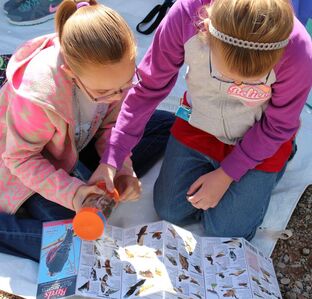
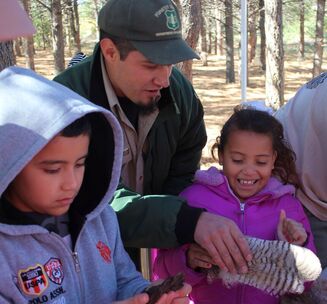
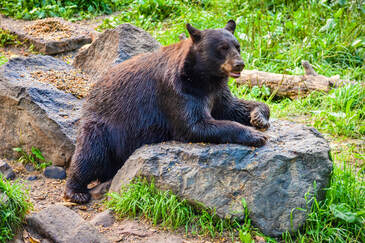
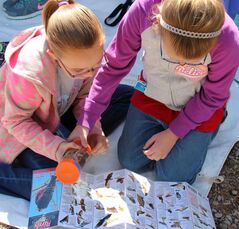

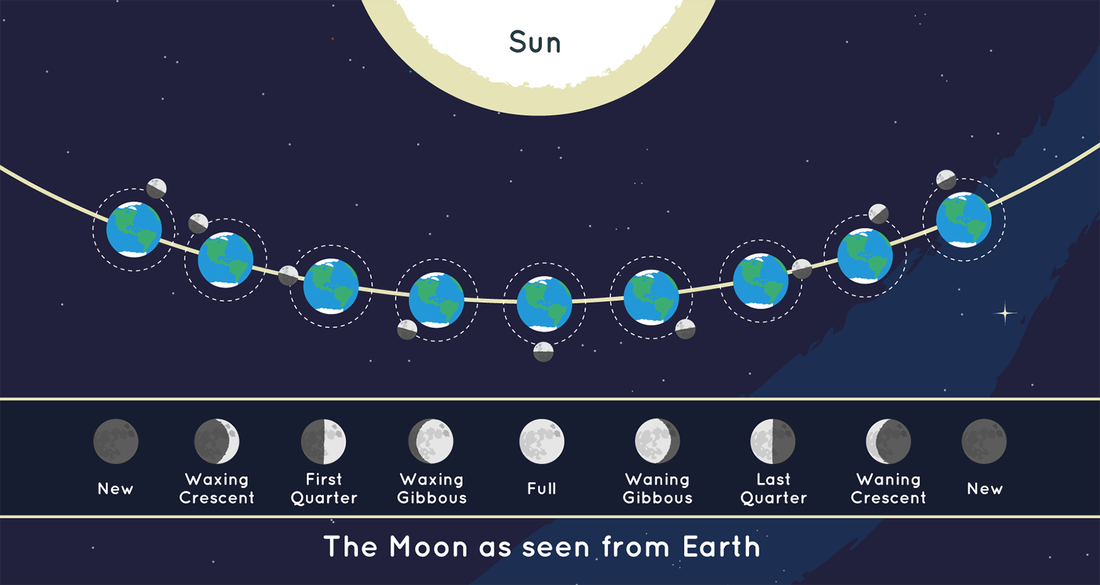
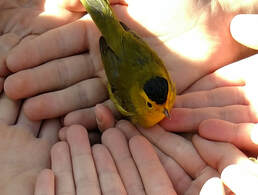
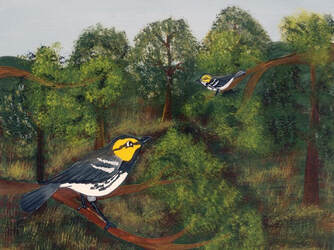
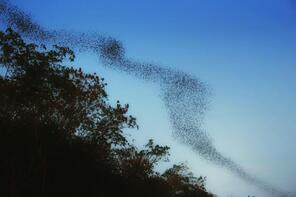
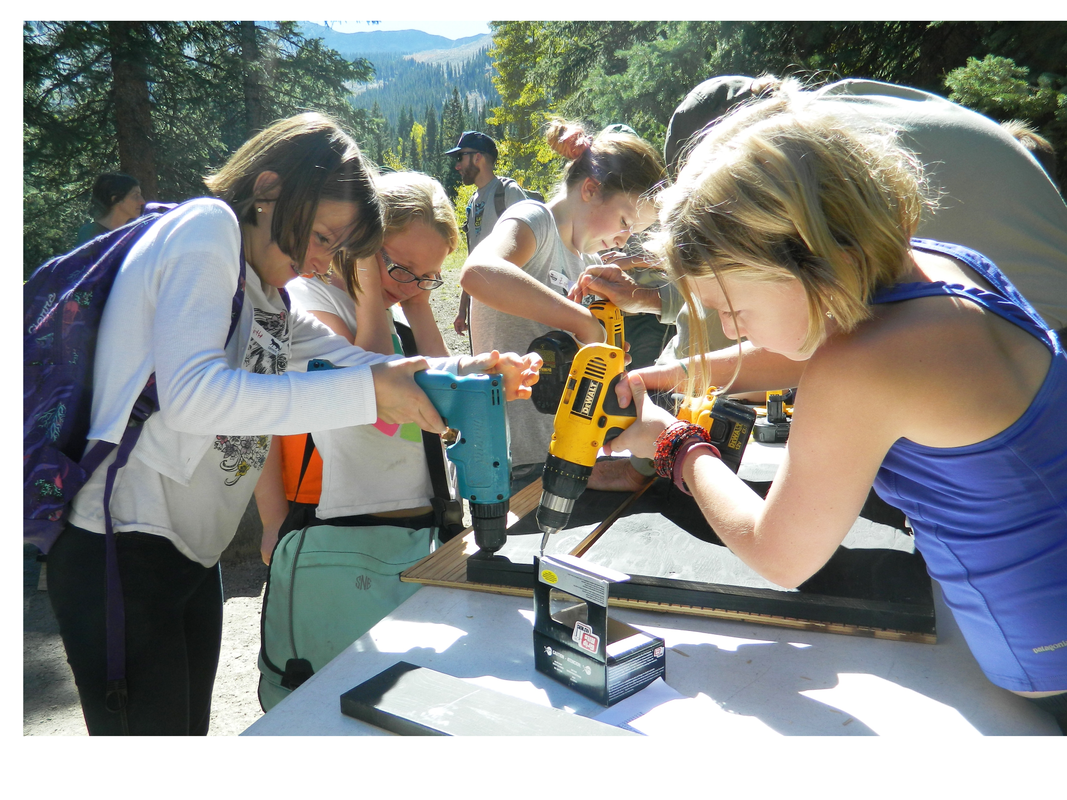
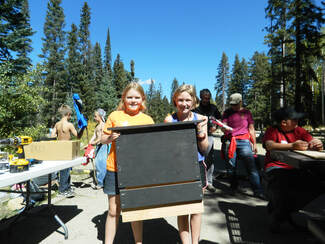
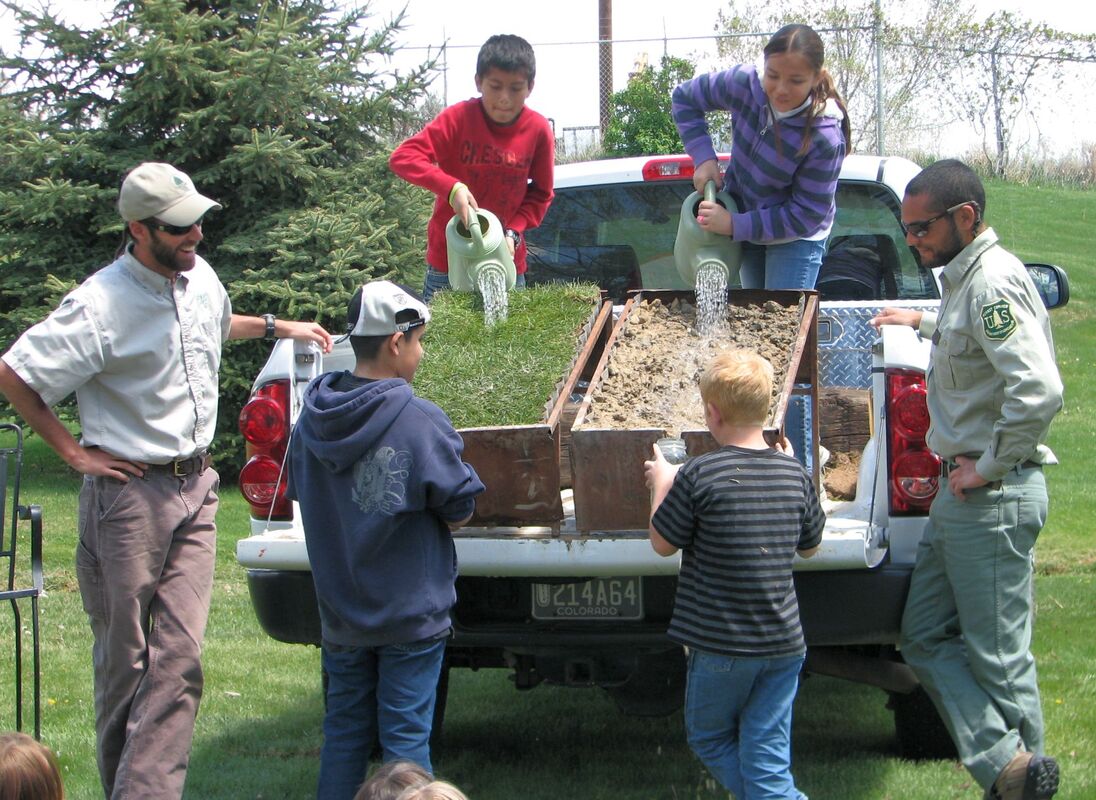
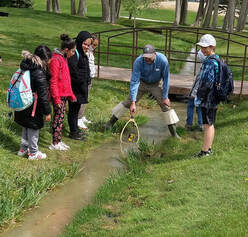


 RSS Feed
RSS Feed


